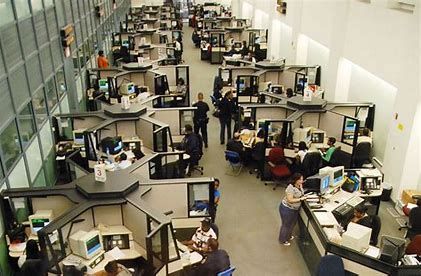Wedges? Thanks I'll have another
Wedge Projects - What are they and why do I need it?

Often it seems like getting started with a digitial transformation, is a bit like trying to launch a ship. There is a lot of mass that needs to be moved, and just pushing it takes a lot of effort. Quite often the challenge isn't the transformation journey, but trying to overcome the inertia to actually start the journey. I see this problem, a lot
There are many reasons why transformations are delayed or fail to start. These might include:-
- lack of buy-in from senior stakeholders
- objectives and aims not agreed
- business case & benefits not proven or ineffectively socialised
- failure to agree the first step
- assumptions challenged or disbelieved
- budgets not approved or deemed too expensive
This is by no means an exhaustive list, however delays rarely, if ever, improve the situation. Instead, they make the eventual transformation worse.
So how can we overcome this inertia?
Traditionally we may have considered a pilot of proof of concept, but (and this may be your expereince) many just prove what we already knew or fail to grow beyond the initial pilot, not adding anything new to the conversation and leaving a feeling of "why did we bother?"
One way of launching a ship is the using a ships wedge. So as the bottle is being broken on the ship's bow, underneath the boat, someone else is knocking out the ships wedge, meaning the mass of the ship and gravity combine to generate the moment that causes the ship to slide into the water. A wedge project is like the ships' wedge, and does the same for a transformation - a small thing that generates the momentum and gets the transformation started.
So what differentatiates a wedge project from a pilot, proof of concept, prototype etc?
A wedge project has seven attributes. They are:
- Small - We don't want to boil the ocean
- Easy to do - We don't want to over complicate what we're trying to do
- Focussed - We have one or two objectives only and want to avoid scope creep
- Ring-Fenced - We do not need to integrate, we can come in and leave without affecting the other systems
- Fast - Typically lasts between 4-6 weeks, with initial data/trends after the first couple of weeks
- Scale - The wedge project can can be rapidly scaled
- Relevant - The wedge must be relevent, addressing or tackling a challenge that matters or is important today
Consequently the cost of doing a wedge is also low.
What are the benefits of a wedge project?
The key benefit from a wedge project is data, specifically our data, data that we can act upon. This allows us to quantify the potential benefit and identify the win-win.
For example, if we are doing a wedge project on air quality in an Emergency Department (ED), we know there is a link between poor air quality and cognitive functions. In a life or death situation that is the ED, we would hope that the high pressure nature of the role the medical staff are doing and the decisions they're making are not being compromised by poor air quality. The wedge project will give us that data. We can then assess, based on our actual data, the anticipated benefit (or otherwise) of monitoring and optimising air quality, inlcuing the costs to roll out the wedge, for example in the ED example to other departments, other buildings, other EDs and onwards through that healthcare operation.
Why a wedge project is a win-win, is because the data collected reveals areas for improvement and how we can act to remediate the situation. Alternatively the data may confirm that actually the situation is already (or close to) optimal, in which case we have evidence to demonstrate compliance and can turn our focus elsewhere.
Given the nature of a wedge project, then either outcome is a win, achieved quickly, at minimal cost and with little, if any, disruption.
Call to Action
So if you find yourself needing to transform, but are faced with inertia or a culture resistant to change, reach out to Qbedes and together we can identify a wedge project.
Remember, espeically you golfers, when stuck in the rough, reach out for your wedge.



